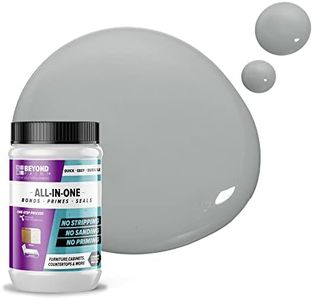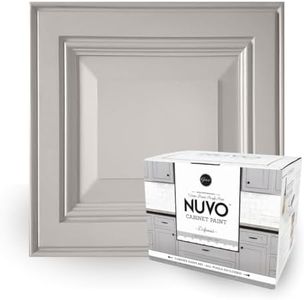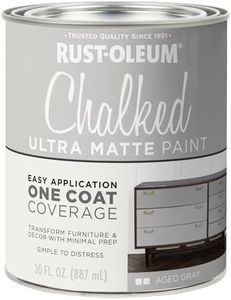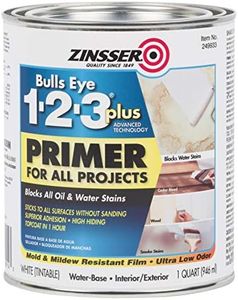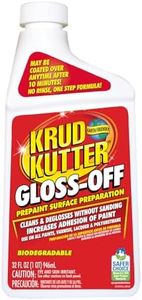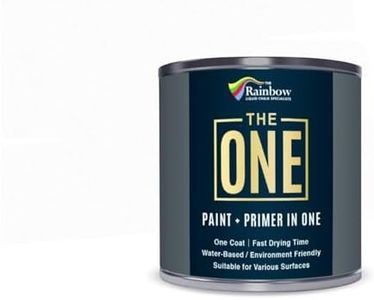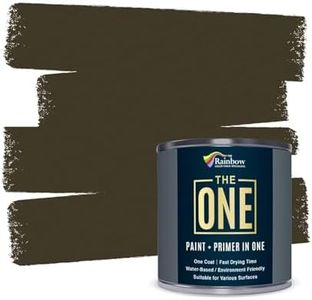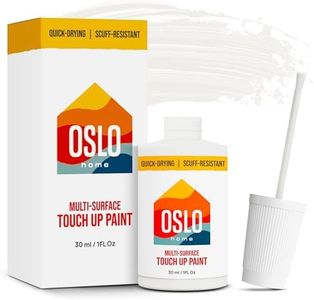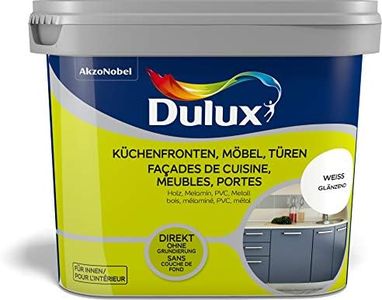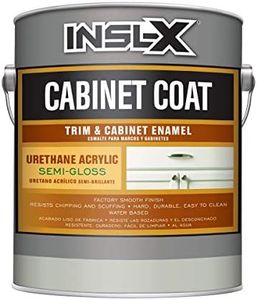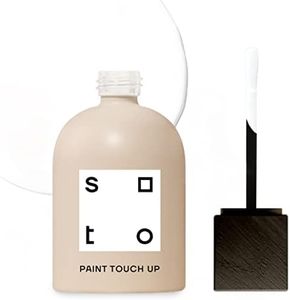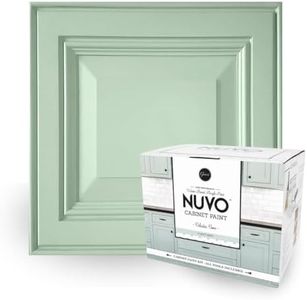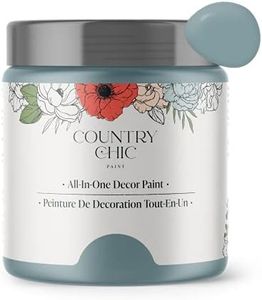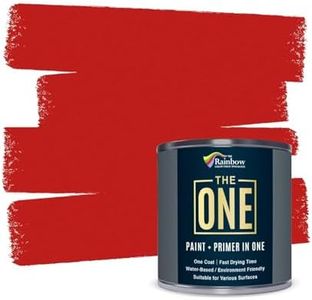We Use CookiesWe use cookies to enhance the security, performance,
functionality and for analytical and promotional activities. By continuing to browse this site you
are agreeing to our privacy policy
10 Best Kitchen Cabinet Paint
From leading brands and best sellers available on the web.Buying Guide for the Best Kitchen Cabinet Paint
Choosing the right paint for kitchen cabinets is an important step in any kitchen refresh project. The paint you choose will impact not only how your cabinets look, but also how long the finish lasts and how easy it is to maintain. Since kitchen cabinets are exposed to humidity, grease, and frequent cleaning, picking the proper type of paint ensures your efforts stand the test of time. Before buying, think about your cabinet material, the overall kitchen style you want, and how much wear your cabinets are likely to see.Paint Type (Latex vs. Oil-Based)Paint type refers to the main ingredient in the paint. Latex (water-based) paints are popular today because they dry quickly, have lower odors, and are easier to clean up. Oil-based paints take longer to dry, but they provide a harder, more durable finish that can stand up to constant use. If your cabinets get heavy use or you want a really tough finish, oil-based is often chosen, though modern latex paints formulated for trim and cabinets can also be very durable. Consider latex if you want a quicker job with less fuss and fewer fumes, but go for oil-based or specialty cabinet enamel if you’re aiming for maximum durability.
Finish (Sheen Level)The finish, or sheen, describes how shiny the dried paint will look. The major options are matte/flat, eggshell, satin, semi-gloss, or gloss. The glossier the finish, the easier it is to clean and the more reflective it looks, which can highlight surface imperfections. For most kitchens, a satin or semi-gloss finish strikes the best balance—it resists staining and is easy to wipe down, but doesn’t overly highlight dings or flaws. Matte finishes are rarely chosen for cabinets, since they’re harder to keep clean, while high-gloss can be striking but also demanding in prep. Think about how much cleaning you’ll need to do and whether you want a softer look (go satin) or lots of shine (go semi-gloss or gloss).
Adhesion and Primer RequirementsAdhesion is how well the paint sticks to your cabinet surfaces, which depends on both the paint itself and whether you use a primer underneath. Some cabinet paints are labeled as ‘self-priming’ or ‘bonding’ and are made to stick directly to most surfaces. However, using a separate primer—especially on slick surfaces like laminate or glossy finishes—helps the paint grab on and last longer. If your cabinets are stained, painted, or made from challenging materials, always check if a good-quality primer is recommended. If you’re repainting over similar paint, you might get away with less prep, but for best results and longevity, don’t skip on adhesion factors.
Durability and WashabilityDurability refers to how well the painted surface stands up to chips, scratches, and regular cleaning. Kitchen cabinets are opened and touched daily, so durability is crucial. Some paints are formulated especially for cabinets or trim and offer higher resistance to wear and frequent washing. Washability describes how easily you can clean the surface without damaging it. If your kitchen sees lots of cooking activity, kids, or pets, prioritize paints that mention high durability and scrubbability in their features. These blends are typically labeled as ‘cabinet paint,’ ‘enamel,’ or ‘kitchen and bath paint.’
Color and CoverageColor is mostly a matter of style, but when it comes to paint, coverage means how well the paint hides the old color and surface in one or two coats. Some paints are more opaque and cover better, meaning fewer layers and a more even finish. Light colors over dark wood or previous paint may need a specialty primer or multiple coats for full coverage. If you’re making a dramatic color change, look for paint rated for excellent coverage or plan on priming first. When picking a color, think about your lighting, kitchen size, and the mood you want—lighter shades can make a small kitchen feel bigger, while darker hues feel dramatic but might show dust and fingerprints more.

